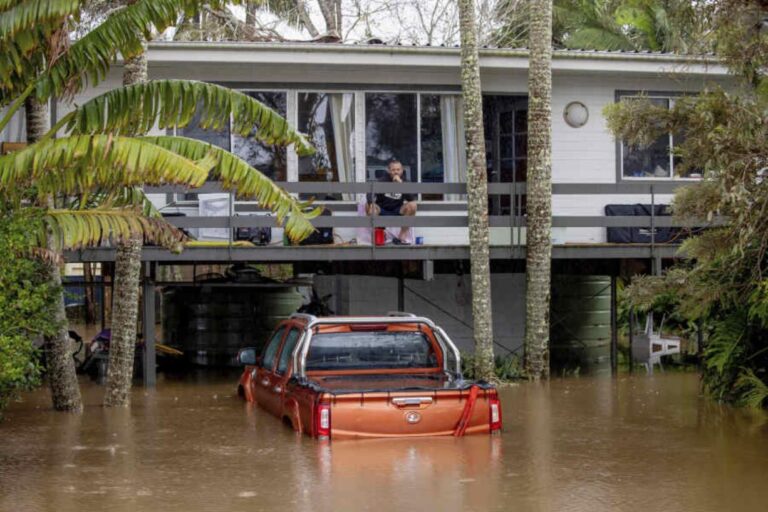Severe Flooding in Eastern Australia Claims Four Lives and Leaves One Missing
In a harrowing demonstration of nature’s power, eastern Australia is currently facing unprecedented flooding that has tragically resulted in four fatalities and left one person unaccounted for. Record-breaking rainfall has submerged entire communities, leading to widespread emergency declarations as residents confront remarkable water levels. Emergency services are working tirelessly to manage the crisis,with thousands displaced and critical infrastructure suffering significant damage. As search and rescue operations persist, the repercussions of these floods are resonating throughout the region, prompting urgent discussions about climate resilience and our capacity to handle natural disasters amid escalating weather extremes. This article delves into the ongoing situation, evaluates response efforts from local and federal agencies, and explores the profound effects on impacted communities.
Unprecedented Floods Impact Eastern Australia
The aftermath of severe flooding in eastern Australia has left communities reeling from it’s destructive force. Emergency services have been overwhelmed with requests for help as roads become impassable and homes are engulfed by water. Reports confirm that four individuals have sadly lost their lives, while search operations continue for a fifth person who remains missing. Many residents have been compelled to evacuate their homes in search of safety at community centers or with family members, further complicating an already dire situation.
This catastrophic flooding not only claims lives but also inflicts serious damage on infrastructure and local economies. The agricultural sector faces significant threats as extensive crop losses under rushing waters could lead to disruptions in food supply chains. in response to this crisis, authorities are coordinating relief efforts by mobilizing resources for rescue missions and immediate assistance.additionally, the Australian government has initiated an emergency fund aimed at supporting affected regions. As communities unite to tackle this disaster head-on, assessments of long-term recovery challenges remain ongoing.
Challenges in Emergency Response Efforts Amid Ongoing Crisis
The unprecedented flooding across eastern Australia presents formidable challenges for emergency response teams striving to navigate through chaos post-disaster. Access restrictions hinder timely aid delivery to some of the most severely affected areas; key obstacles include:
- Logistical Challenges: flooded roadways coupled with damaged infrastructure impede essential supply distribution.
- safety Risks: Rescuers must prioritize their own safety while attempting rescues under rapidly changing conditions.
- Aid Prioritization: With numerous communities requiring assistance concurrently, determining where resources should be allocated poses a complex dilemma.
The emotional strain on residents adds another layer of complexity during recovery efforts; families displaced or missing loved ones require not only physical support but also psychological care from emergency workers who provide crucial emotional assistance alongside rescue operations. Various organizations have launched donation drives and fundraising initiatives aimed at bolstering local recovery endeavors amidst this crisis.
| Name of Institution | Aid Type Offered | Status Update |
|---|---|---|
| SES (State Emergency Service) | Rescue Operations support | Status: Ongoing efforts |
| Croix-Rouge (Red Cross) | Earmarked Relief Fund Initiatives | Status: active Engagements |
| Local Charities | Distribution Of Food And Supplies | Status: In Progress |
Strategies for long-Term Flood Mitigation Planning Ahead
The devastating floods that have claimed lives while displacing countless others highlight an urgent need for implementing long-term flood mitigation strategies within vulnerable communities.
Investing In Resilient infrastructure is essential; measures such as reinforcing levees , enhancing drainage systems ,and constructing retention basins designed specifically manage excessive rainfall can significantly reduce future risks .
Land-Use Planning plays a vital role too ; steering developments away high-risk flood zones creating green spaces capable absorbing runoff can mitigate potential damages .
Community Education Engagement empowers residents understand their flood risk prepare accordingly including developing tailored emergency response plans suited specific circumstances .
Additionally , integrating nature-based solutions enhances resilience against flooding ; protected wetlands natural buffers serve dual purposes providing habitats wildlife acting effective barriers against floodwaters . Incorporating technology like real-time monitoring systems offers critical data aiding timely warnings reducing overall damage potential . Collaborative partnerships between governmental entities local organizations residents prove indispensable ensuring all stakeholders proactively address flood mitigation needs moving forward.
| Mitigation Strategy | <Benefits | |
|---|---|---|
| infrastructure investment | <Strengthens defenses against potential floods | |
| Land-Use Planning | <Minimizes risk by avoiding high-risk areas |
Conclusion: Reflections on Recovery Efforts Post-Flooding CrisisThe aftermath following severe flooding events across eastern Australia continues unfolding as affected communities face immense challenges related loss recovery processes ahead . With four confirmed fatalities one individual still unaccounted , human toll resulting environmental disaster emphasizes urgency surrounding ongoing support resilience initiatives required rebuild effectively moving forward . |




